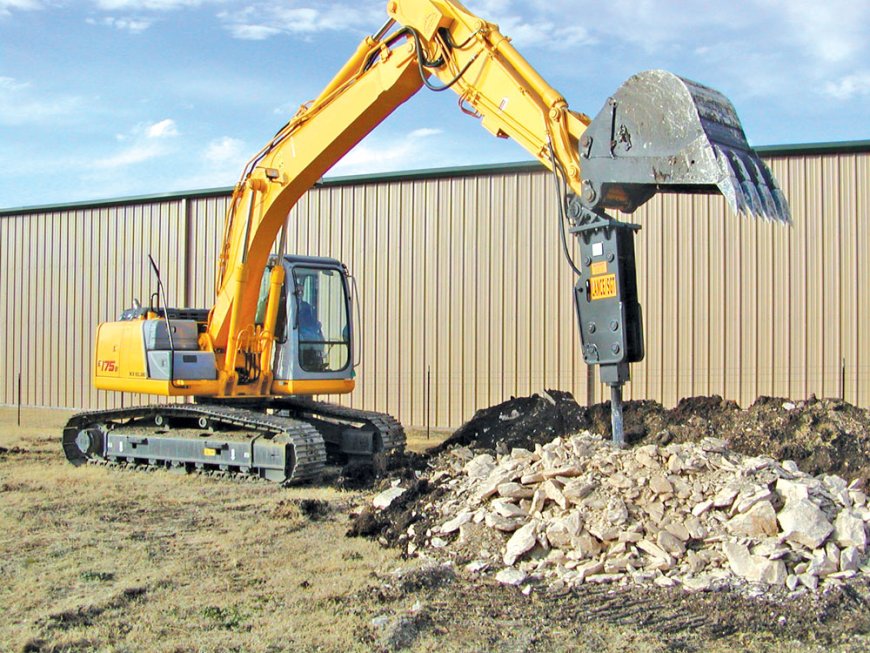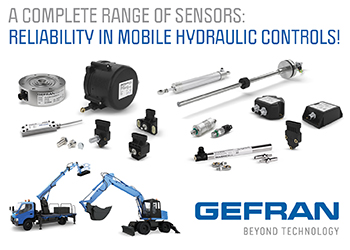From BUCKETS to BREAKERS Unlocking the Full Potential of Attachments
In the ever-evolving world of construction, attachments have become an indispensable part of heavy equipment, significantly enhancing machine functionality,

In the ever-evolving world of construction, attachments have become an indispensable part of heavy equipment, significantly enhancing machine functionality, improving efficiency, and reducing operational costs. These specialized tools allow a single piece of machinery to perform multiple tasks, eliminating the need for multiple machines on a job site. Whether it’s an excavator, skid steer, backhoe loader, or wheel loader, the right attachment can transform the equipment into a multi-functional asset, finds Equipment Times.
As construction projects become more complex and cost-driven, contractors are increasingly turning to attachments to maximize productivity. The growing demand for automation, sustainability, and cost-effective solutions has pushed manufacturers to develop smarter, more efficient attachments. From hydraulic breakers and augers to tiltrotators and grapples, the variety of attachments available today allows machines to take on new roles, making construction operations more seamless and effective.
Market Trends in Construction Equipment Attachments
The global market for construction equipment attachments has witnessed significant growth in recent years, driven by increasing urbanization and infrastructure development. Contractors now prioritize versatility, preferring machines that can switch between tasks with the help of attachments rather than investing in multiple pieces of equipment. Additionally, the rental market for attachments is expanding, as many construction companies opt for renting specialized tools instead of purchasing them outright. Rental companies are, therefore, increasing their inventories to meet this growing demand.
Technological advancements in attachments
Technological advancements have further accelerated the adoption of smart attachments. Many modern attachments now feature telematics integration, automated controls, and smart sensors that help operators enhance precision, reduce material wastage, and improve overall efficiency. For instance, IoT-enabled attachments provide real-time data on performance and maintenance needs, helping companies optimize their operations. Similarly, tiltrotators allow attachments to rotate 360 degrees and tilt at various angles, offering greater flexibility and reducing the need for repositioning the machine.
Sustainability is another driving factor in the evolution of attachments. As construction companies focus on reducing their carbon footprint, manufacturers are developing eco-friendly attachments that improve fuel efficiency and reduce emissions. Electrically powered attachments and hybrid models are gaining traction, providing an environmentally friendly alternative to traditional hydraulic-powered tools.
One of the most significant innovations in attachments is the hydraulic quick coupler, which enables operators to switch between attachments without manual intervention. This feature not only saves time but also improves safety by reducing the need for workers to engage in hazardous on-site attachment changes. Additionally, AI-enabled grading blades and autonomous attachments are being developed to enhance accuracy and efficiency in construction tasks.
Understanding Attachments in Construction Equipment
Different attachments serve unique purposes across various construction applications. Excavator attachments like buckets, hydraulic breakers, grapples, and augers are widely used for digging, demolishing, material handling, and drilling. Skid steer loaders can be equipped with trenchers, brush cutters, and pallet forks to handle everything from landscaping to material transport. Backhoe loaders benefit from 4-in-1 buckets, hydraulic hammers, and rippers, making them suitable for diverse job site requirements. Wheel loader attachments like snow plows, material handling arms, and log grapples further expand their functionality in different terrains and industries.
Safety First: Attachments as Protective Measures
Safety is non-negotiable in construction. Attachments not only boost productivity but also contribute to a safer work environment. Take tiltrotators, for example. These innovative attachments allow operators to manipulate tools at various angles without repositioning the entire machine, reducing the need for risky maneuvers. Similarly, demolition attachments like shears and crushers enable controlled dismantling, minimizing hazards associated with manual demolition methods.
Innovations Shaping the Future
As technology continues to advance, so too do attachments in construction equipment. The advent of smart attachments equipped with sensors and IoT capabilities is revolutionizing the industry. These attachments provide real-time data on usage, performance, and maintenance needs, allowing for proactive decision-making and predictive maintenance strategies. Furthermore, advancements in materials and design are yielding attachments that are lighter, more durable, and environmentally friendly, further pushing the boundaries of what’s possible in construction.
In the grand symphony of construction, attachments may not take center stage, but their influence is unmistakable. From enhancing versatility and precision to improving efficiency and safety, attachments are the unsung heroes that quietly empower construction projects around the globe. As the industry continues to evolve, one thing remains certain - attachments will continue to be the driving force behind innovation and progress in construction equipment, shaping the skylines of tomorrow.
Challenges in the market
Despite the increasing adoption of attachments, the industry faces several challenges. One of the biggest issues is compatibility, as not all attachments fit every machine model. Operators and contractors must ensure that attachments are designed to match their equipment specifications. High initial investment costs can also be a deterrent, especially for small contractors, though the growing rental market helps mitigate this issue. Additionally, attachments undergo significant wear and tear, requiring regular maintenance to maximize their lifespan. Proper operator training is another crucial factor, as inexperienced workers may struggle to use attachments efficiently, leading to inefficiencies and safety risks.
Future
The future of construction equipment attachments looks promising, with continued advancements in technology and design. Fully autonomous attachments that require minimal human intervention are expected to become more common, improving precision and reducing labor costs. Eco-friendly and electric attachments will play a key role in meeting the industry’s sustainability goals. Additionally, modular and customizable attachments will provide even greater flexibility, allowing machines to adapt to diverse construction needs.
Augmented reality (AR) is also expected to revolutionize operator training, helping workers learn how to use attachments more effectively in a simulated environment before applying their skills on-site. Furthermore, 3D printing technology could enable on-demand manufacturing of custom attachment parts, reducing production costs and minimizing downtime for construction companies.
As construction continues to evolve, attachments will remain a vital component of the industry, enabling machines to become more versatile, efficient, and sustainable. Contractors, manufacturers, and rental companies must stay ahead of market trends, invest in innovative attachment solutions, and focus on operator training to fully harness the potential of these indispensable tools. With continuous innovation, the future of attachments in construction equipment is set to redefine the way we build, demolish, and shape the world around us.
Industry reacts
 Sudip Kargupta- General Manager- Parts Business, HD Hyundai Construction Equipment India, said, “Indian economy has shown immense growth in recent times. We have overtaken many major economies and today in 2025 we are world’s 4th largest economy. One of the major driver of this growth is its Infrastructure and Industries. And this has resulted in significant increase in demand for construction equipment and allied attachments. The Indian government’s focus on infrastructure projects, such as the National Infrastructure Pipeline and PM Gati Shakti initiatives, River connectivity, drive for urbanisation like Smart Cities has significantly boosted the demand for construction equipment and their attachments. An attachment gives versatility to the carrier machine. It creates the option to keep the carrier machine active for most of the time.
Sudip Kargupta- General Manager- Parts Business, HD Hyundai Construction Equipment India, said, “Indian economy has shown immense growth in recent times. We have overtaken many major economies and today in 2025 we are world’s 4th largest economy. One of the major driver of this growth is its Infrastructure and Industries. And this has resulted in significant increase in demand for construction equipment and allied attachments. The Indian government’s focus on infrastructure projects, such as the National Infrastructure Pipeline and PM Gati Shakti initiatives, River connectivity, drive for urbanisation like Smart Cities has significantly boosted the demand for construction equipment and their attachments. An attachment gives versatility to the carrier machine. It creates the option to keep the carrier machine active for most of the time.
Investing in attachments compared to specialized machinery has proven to be a more economical solution for small and medium-sized contractors. Innovations such as smart attachments with integrated sensors and automation, like Hour Counters and Remote Monitoring have made these tools more efficient and user-friendly. Attachments offer a cost-effective solution for contractors, enabling them to adapt to diverse project requirements without investing in multiple machines.
The rise of equipment rental markets has also made attachments more accessible, catering to diverse need of contractors. HD HYUNDAI being a very responsible OEM in the construction equipment industry, are increasingly adopting sustainable eco-friendly practices to reduce environmental impact. We are certified under ISO 9001:2015, ISO 14001, ISO 45001. These certifications boosts our confidence as a quality driven company with strong environmental responsibility. In our manufacturing lines we ensure strict adherence to employee health and safety rules. We have zero tolerance to unsafe acts and our safety team eliminates any potential risk for man or material on a proactive basis. Our attachments are designed optimally lighter to reduce fuel consumption during operation, lowering carbon emissions. The Modular components designs makes it easier to replace parts, extending the lifespan of equipment and reducing waste.”
 Ajit Dabke, General Manager – Technical, Suretech Infrastructure, said, “In earthmoving segment Screening/Crushing Buckets, Vibro Rippers, Excavator mounted Vibro Hammers, plate/drum compactors, Rotary Cutters, Auger Drives are leading attachments. Demolition segment is ruled by machine mounted combi cutter/crushers, rotary cutters hand held splitters/shears with power pack, high reach demolition as well as rock breakers. Material handling segment demands long reach boom/arm, grapple buckets, clamshell buckets as well high dump attachments. More and more roads are now made of concrete rather than Asphalt. Planers and Milling attachments were popular in the asphalt segment, however operating cost on account of GETs brings the feasibility of these attachments under question for concrete application. Currently diamond wheel saw is in demand for cutting segments. Attachments being metallic in construction are easy to dispose, recycle thus reducing adverse impact on environment. Advanced designing, prolonged intervals on consumables and maintenance make attachment eco-friendly. However, plastic, rubber components and electronic components are still a challenge to overcome.”
Ajit Dabke, General Manager – Technical, Suretech Infrastructure, said, “In earthmoving segment Screening/Crushing Buckets, Vibro Rippers, Excavator mounted Vibro Hammers, plate/drum compactors, Rotary Cutters, Auger Drives are leading attachments. Demolition segment is ruled by machine mounted combi cutter/crushers, rotary cutters hand held splitters/shears with power pack, high reach demolition as well as rock breakers. Material handling segment demands long reach boom/arm, grapple buckets, clamshell buckets as well high dump attachments. More and more roads are now made of concrete rather than Asphalt. Planers and Milling attachments were popular in the asphalt segment, however operating cost on account of GETs brings the feasibility of these attachments under question for concrete application. Currently diamond wheel saw is in demand for cutting segments. Attachments being metallic in construction are easy to dispose, recycle thus reducing adverse impact on environment. Advanced designing, prolonged intervals on consumables and maintenance make attachment eco-friendly. However, plastic, rubber components and electronic components are still a challenge to overcome.”








